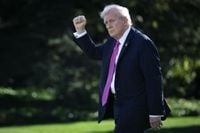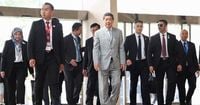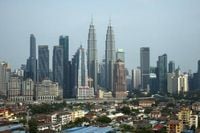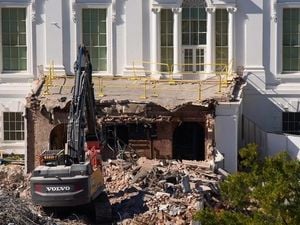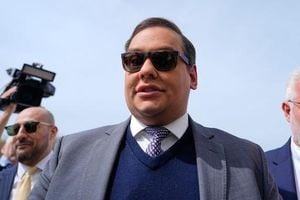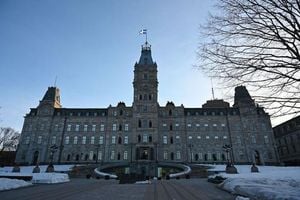United States President Donald Trump touched down in Kuala Lumpur on Sunday, October 26, 2025, kicking off a five-day tour of Asia that has already drawn global attention for its high stakes and historic milestones. The trip marks Trump’s first return to Asia since reclaiming the White House in January, and his presence at the Association of Southeast Asian Nations (ASEAN) summit signals renewed U.S. engagement in a region grappling with shifting alliances and economic turbulence.
Trump’s itinerary is packed: after Malaysia, he’ll head to Japan and South Korea, with a much-anticipated face-to-face meeting with Chinese President Xi Jinping set for Thursday in Busan. According to AFP and Kyodo News, this is only the second time Trump has attended an ASEAN summit, his last being in 2017. The significance isn’t lost on regional leaders, who have long measured U.S. interest in Southeast Asia by whether a sitting president shows up in person.
But the spotlight isn’t just on Trump. This year’s ASEAN summit in Kuala Lumpur is a landmark event for the bloc itself. For the first time in 26 years, ASEAN is welcoming a new member: East Timor, also known as Timor Leste. The tiny nation of 1.4 million, which endured centuries of Portuguese colonial rule and a brutal Indonesian occupation before achieving independence in 2002, is being hailed as a symbol of regional inclusivity. As Malaysian Prime Minister Anwar Ibrahim put it, “They are poor, yes, but they still have the potential. As a community, it’s our duty to prop up these countries.”
The formal admission of East Timor brings ASEAN’s membership to 11, opening doors for the young nation to access free trade deals, new investment, and a broader regional market. The moment is both practical and deeply symbolic, reflecting ASEAN’s ongoing efforts to integrate its most vulnerable neighbors and strengthen the group’s collective bargaining power.
Yet, the summit’s agenda is anything but ceremonial. Regional security, economic resilience, and maritime disputes—especially in the South China Sea—loom large over discussions. Trump’s aggressive trade policies have rattled markets and tested decades of globalization, with new U.S. tariffs and shifting global trade patterns at the forefront. On Saturday, top economic officials from the U.S. and China began talks in Kuala Lumpur to try and chart a path forward, as reported by Al Jazeera. The stakes are high: Trump has threatened to slap 100 percent tariffs on Chinese goods starting November 1 if a deal isn’t reached, a move that would almost certainly provoke a strong reaction from Beijing.
Trump’s meeting with Xi in Busan is expected to cover not just trade, but also the thorny issues of Taiwan, Russia, and the imprisonment of Jimmy Lai, the pro-democracy publisher now jailed in Hong Kong. “It’s on my list. I’m going to ask … We’ll see what happens,” Trump told reporters, according to AFP, when asked if he’d raise Lai’s case with the Chinese leader.
Meanwhile, the regional mood is tense. Thousands of South Koreans have taken to the streets in Seoul to protest Trump’s tariff policies and his pressure on South Korea to invest more in the U.S., Al Jazeera noted. In Malaysia, security has been ramped up ahead of planned protests against Trump’s visit, particularly over his administration’s stance on the Palestinian issue. Prime Minister Anwar has said peaceful demonstrations will be allowed, but he’s vowed that the summit will proceed smoothly. “Trump’s presence reflects a rare moment of direct U.S. presidential engagement in the region,” Joanne Lin of the ISEAS–Yusof Ishak Institute told AP. “But more than deepening U.S. involvement, this visit is about visibility. Trump wants to project himself as a global dealmaker at a time when his domestic policies, especially tariffs, have unsettled key partners in the region.”
Beyond the U.S.-China drama, the ASEAN summit is addressing its own pressing crises. The leaders are expected to sign an upgraded free trade pact with China and convene the first leaders’ summit of the Regional Comprehensive Economic Partnership (RCEP) since 2020. RCEP, which includes ASEAN and five major partners—China, Japan, South Korea, Australia, and New Zealand—is the world’s largest trade bloc. Its revival comes as regional economies scramble to stabilize trade flows in the face of Washington’s tariff threats.
Security flashpoints are also on the agenda. The South China Sea dispute continues to test ASEAN’s unity, with ongoing negotiations for a code of conduct for the contested waterway. Meanwhile, Myanmar’s civil war, triggered by the military’s 2021 takeover, remains unresolved. The junta’s plans for December elections, widely dismissed as neither free nor fair, have left ASEAN in a bind. The bloc has barred Myanmar’s military leaders from summits since 2021, but faces tough choices about whether to send observers to the upcoming vote—a move that could be seen as legitimizing the regime or, if refused, risk further isolating Myanmar and weakening ASEAN’s leverage.
Another headline event is the signing of a ceasefire between Thailand and Cambodia, overseen by Trump and Prime Minister Anwar. The deal, brokered in Kuala Lumpur in July, follows deadly border clashes earlier this year. Trump, who had threatened to suspend trade negotiations if the fighting continued, is eager to cast himself as a peacemaker. “I told the leader of Malaysia, who is a very good man, I think I owe you a trip,” Trump said aboard Air Force One, as reported by AFP. The ceasefire, while not a comprehensive peace agreement, is seen as a step toward stability in a region where old rivalries can quickly turn deadly.
Also making waves at the summit are Brazil’s President Luiz Inácio Lula da Silva and South Africa’s President Cyril Ramaphosa, both attending as new sectoral dialogue partners. Lula, in particular, is expected to press Trump to cut a 40 percent tariff on Brazilian imports and raise concerns about U.S. military actions off the South American coast. The White House has yet to confirm whether a bilateral meeting will take place, but Lula’s presence underscores ASEAN’s ambition to deepen ties with Africa and Latin America.
Trump’s Asia tour is as much about optics as substance. In Japan, he’ll meet the country’s first female prime minister, Sanae Takaichi, just a week after she took office. Trump is likely to praise the late Prime Minister Shinzo Abe, with whom he had a famously close relationship, and emphasize the enduring strength of the U.S.-Japan alliance. He’s also expected to urge Japan to buy more American products and invest further in the U.S.—a familiar refrain from his first term.
As the summit unfolds, the world is watching. Will Trump’s tough talk on trade yield results, or will it deepen divisions? Can ASEAN maintain unity as it expands and faces internal and external pressures? And will East Timor’s entry mark a new era of inclusivity and opportunity for Southeast Asia? With so many moving parts, the only certainty is that this week’s meetings in Kuala Lumpur and beyond will shape the region’s trajectory for years to come.
In a region where symbolism and substance often go hand in hand, the 2025 ASEAN summit stands out as a crossroads—one where history, diplomacy, and raw economic interests collide under the global spotlight.
